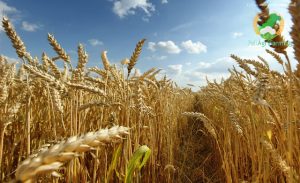Production technology of potato for yield enhancement per unit area in Pakistan
Muhammad Amjid*1, Arshad Ali1, Muhammad Sajid1 and Muhammad Umair Yasin1.
1Department of Agronomy, University of Agriculture, Faisalabad, Pakistan.
*Corresponding author’s email: [email protected]
The Indian in Peru were the first to cultivate potato around 8000 BC to 5000 BC. Now a day’s potato is an important crop in the perspective of farmer and consumer in Pakistan. Potato is fourth largest crop that produce Pakistan after wheat, rice and sugarcane. It has much nutritive value and give high return to farmer. During the time of independence total 30,000-hectare area cultivated of potato. Pakistan is self-sufficient in potato for household consumption and relies more than 90% on locally produce seed. Due to large production, potato give more output to the farmer. Its scientific name is Solanum tuberosum and it belong to Solanaceae family and it is cross-pollinated crop and having 48 chromosomes number. In Pakistan, total 133-thousand-hectare area is cultivated in term of potato and the production is 2600 thousand tons. There are different varieties with respect to color. Red and white varieties are common in Pakistan and chips varieties Lady Rosita, Asterx and Fsd red croda Santay. Fsd white, Cruza, Torus, Mosica, Lady Rosita, Cruza, Torus. For the better production and yield enhancement of potato, crop can be rotated as
- Potato- Maize-Millet
- Potato-Maize- Paddy
- Potato-Maize-Pulses
- Potato-Paddy
35-40 monds/acre and its mean 1200-1600 kg/acre seed required. It will be grown at the temperature 15-18 °C. If the temperature changes below the 10°C and rise up the 30°C then growth can affect due the fluctuations in the temperature. Clay loam, silt loam and well drained soils. Potato can perform better on sandy loam soil with the pH range from 6 to 7.5. Different Growth stages of Potato are sprout development, vegetative growth, tuber initiation, tuber bulking and maturation.
Would you like to buy vegetable gardening book?
Land preparation for potato should be require run two times disk harrow, one rotavator with twice cultivator and once wooden plank. Sowing time start from 1st October to 15th November. Seed treated with Moncerin or Celest at the rate of 40 mL/100 Kg seed. Potatoes are left for the few days to emitted the gas due to the storage in cold storage before they are planted and it helps the tubers grow faster and produce a bigger crop. The distance between one row to another row is 60 to75 cm and the distance between two consecutive plants 15-25 cm. Total number of plant in one acre should be 25000-35000. The interval of irrigation is 6-10 days depending upon temperature. For October sowing crop, irrigation should be stop 15 days before harvesting and in summer crop 7 days before harvesting. Major stages during which potato should be irrigated are:
- Stolon formation stage (20-25 days after planting)
- Stolon development and tuber formation stage (45-50 days after planting)
- Tuber development stage (65 days after planting)
Fertilizer and irrigation
Fertilizer requirements of the potato is 2.5 bags/acre of DAP, 2 bags/acre of SOP and 5 bags/acre of urea and in the relative small quantity of others nutrients are 8 Kg/acre of Humic acid, 10 Kg/acre of Sulphur and 500 g/acre of Boron. For the better yield of potato two times foliar spray of NPK also done. Spray Pendimethalin 3-4 days after sowing and before emergence. Spray Metribuzin 250 ml or gramocxone 400 ml per acre after 10-15% potato emergence. Stop irrigation 25 days before harvesting and cut areal plant parts one week before digging.
Harvesting
Digging is performed start from borders of the plot. Digger is used for digging purpose. Collect tubers with manual labor and make piles. Grading is performed for seed and food selection. Use Jute bags for potato filling. Keep into mind that potato tubers that are used for the seed purpose are kept way from water especially rainy water.
Grading/Sorting
Category Name Size
- Ration Larger Size
- Seed > 50-70 g
- Goli 20-50 g
- Shurli 15-20 g
Yield
Yield of the potato vary from one acre to another acre depending on the production technology, amount of fertilizers, irrigations and fertility of the soil. Appropriate production technology gives the 80-110 bags per acre (1 bag = 120 kg).
Insects
These are the common insects of the potato crop
- Aphid jassid
- Whitefly
- Cutworm
- Tuber Moth
- Army Worm
- American boll worm
Bacterial diseases control
The most common bacterial diseases, which are harmful for potato
- Potato scab
- Black leg
- Root Rot
We can control with following techniques Flare (Kenzo) flood at the rate of 120 g/acre. Bacterial diseases can transmit through physical contact of previously diseased seed. Pure seed and disease free seed from pathogen with the help of seed treatment with 25% thiophanate methyl solution (2.5gm/liter).
Fungal diseases control
Composition and quantity of the chemicals for control of the fungus in the potao field per acre are given below in the table.
| Sr. No. | Diseases | Chemicals | Quantity per acre |
| 01 | Early Blight of potato | Cabrio top/ Polyram | 500 ml/ 250 ml |
| 02 | Late Blight of potato | Radomil gold/ Acrobat | 250 ml/ 250 ml |
| 03 | Downy mildew | Acrobate/ Success / Cabrio top | 250 ml/250 ml/500 ml |
| 04 | Powdery mildew | Topson M/ Cabrio top/ Score | 120ml/ 500 ml/ 250 ml |
Viral
Common virus that causes diseases in the potato crop are
- Potato leaf roll virus (PLRV)
- X-virus
- Y-virus
Keeping into mind that potato tuber should be safe from the rainwater, which are used for the seed purpose. Viral diseases are very dangerous to control in the potato crop and most of the viral diseases are spread from seed to crop through the rainwater. Most important preventive measure is necessary to check the weather before the harvesting of potato.









Very Informative